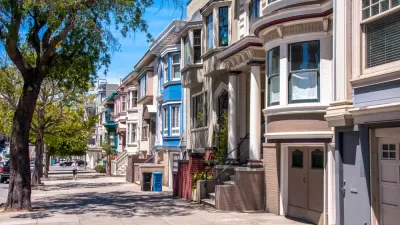As officials in San Francisco debate the city's historic preservation policies, this column looks back at some of the ways the city has successfully preserved its past and some of the ways the process is broken.
"The balancing act here between old and new works more often than not.
The hearing was called by Supervisor Scott Wiener, who insists his goal is nothing more than to "look at how historic preservation fits into an entire range of city issues." The language of the hearing request goes further, asking bureaucrats to report on "the impact of historic preservation policies on other major public policy goals" and "whether legislation is warranted to ensure that all of these policy goals are met."
The fuss might puzzle a layperson who thinks of preservation as something reserved for the likes of the Ferry Building. But critics say that too often the net is cast too broadly, turning anything built more than 45 years ago into a "historic resource" that triggers time-consuming reviews if changes are contemplated. There's also criticism that development foes seek landmark status for anything they want protected, regardless of its historic value."
One common issue, according to urban design critic John King, is that almost anything can be defended as "historic" if people try hard enough.
FULL STORY: Re-evaluating S.F. historic preservation framework

Trump Administration Could Effectively End Housing Voucher Program
Federal officials are eyeing major cuts to the Section 8 program that helps millions of low-income households pay rent.

Planetizen Federal Action Tracker
A weekly monitor of how Trump’s orders and actions are impacting planners and planning in America.

Ken Jennings Launches Transit Web Series
The Jeopardy champ wants you to ride public transit.

Washington Legislature Passes Rent Increase Cap
A bill that caps rent increases at 7 percent plus inflation is headed to the governor’s desk.

From Planning to Action: How LA County Is Rethinking Climate Resilience
Chief Sustainability Officer Rita Kampalath outlines the County’s shift from planning to implementation in its climate resilience efforts, emphasizing cross-departmental coordination, updated recovery strategies, and the need for flexible funding.

New Mexico Aging Department Commits to Helping Seniors Age ‘In Place’ and ‘Autonomously’ in New Draft Plan
As New Mexico’s population of seniors continues to grow, the state’s aging department is proposing expanded initiatives to help seniors maintain their autonomy while also supporting family caregivers.
Urban Design for Planners 1: Software Tools
This six-course series explores essential urban design concepts using open source software and equips planners with the tools they need to participate fully in the urban design process.
Planning for Universal Design
Learn the tools for implementing Universal Design in planning regulations.
Heyer Gruel & Associates PA
Ada County Highway District
Institute for Housing and Urban Development Studies (IHS)
City of Grandview
Harvard GSD Executive Education
Toledo-Lucas County Plan Commissions
Salt Lake City
NYU Wagner Graduate School of Public Service



























